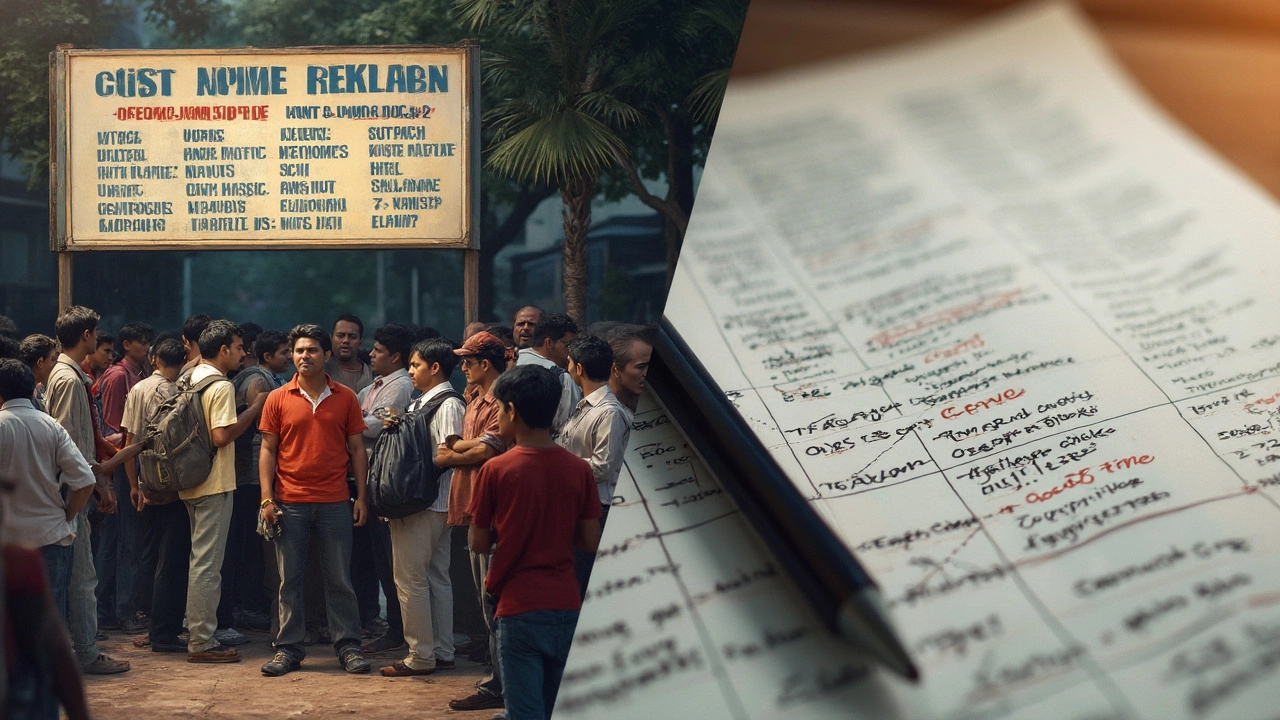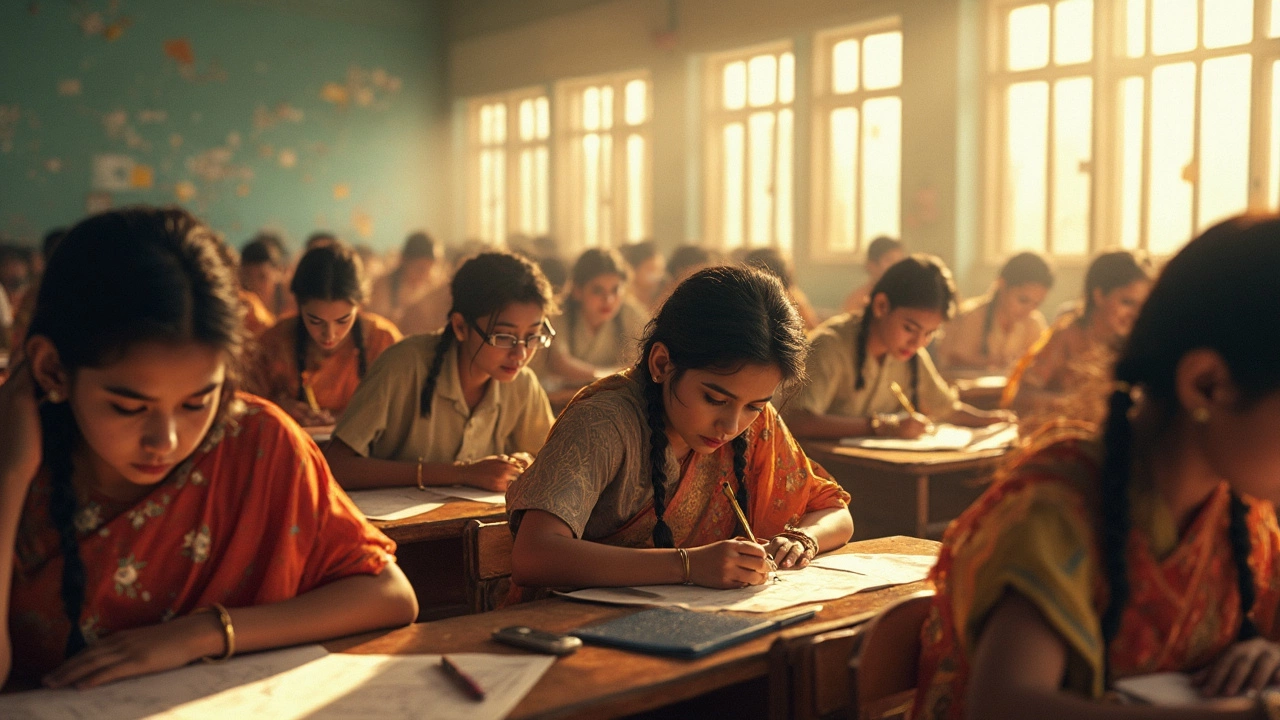Thousands compete for just a handful of seats. That's the story of competitive exams around the world. If you’re asking yourself which exam claims the top spot for being the most cutthroat—that’s not just a question of how tricky the questions are, but how many people you’re up against, how low the success rates dip, and how much effort goes in before you even see a test paper.
Some entrance tests, like India’s IIT JEE or China’s Gaokao, make headlines every year by sending millions of students into study marathons. College hopefuls in the US sweat over the SAT and ACT, but these aren’t even close to the most brutal battlegrounds. Professional licensing exams for doctors, lawyers, and engineers can make even the brightest students anxious thanks to pass rates that scrape the bottom. And it’s not just what’s on the page—it’s months or even years of prep, with tutoring centers, sleepless nights, and the whole family rallying behind you.
So why are some exams so ridiculously competitive? It’s a mix of high stakes, limited opportunities, and (sometimes) national obsession. When only the tiniest percentage make it through, these tests start to feel like more than an academic challenge—they’re life-changing.
- What Makes an Exam Competitive?
- How Exams Around the World Compare
- Toughest Exams That Leave Everyone Sweating
- How to Stay Sane When the Pressure’s On
What Makes an Exam Competitive?
Not all tests are created equal. An exam becomes really competitive when a few key things line up: a huge number of applicants, very limited spots, crazy low pass rates, and serious consequences for not making the cut. Mix these together, and you’ve got a recipe for a make-or-break moment.
The basic formula looks like this: way more people show up than there are seats available, and only a tiny slice comes out successful. Sometimes, only 1% or 2% of people pass. The Indian IIT JEE, for example, can have more than a million students fighting for around 16,000 engineering seats. China’s Gaokao? Over 10 million high schoolers use it as their shot at top universities. Such huge numbers make every single point or answer count.
Here’s what usually drives a competitive exam:
- Number of Candidates: The more people taking the exam, the tougher your odds. Think medical entrance tests like NEET in India or the bar exam for lawyers in the US.
- Seats or Openings: If there are only a handful of spots, every extra applicant makes things that much tighter.
- Pass Rate: Some of these tests have success rates in the single digits. That’s enough to give anyone butterflies!
- Importance of the Exam: If this test is the gatekeeper to your dream career or school, everyone puts their best effort in. That just turns up the heat.
For a quick look at just how tough some of these can be, check out these numbers:
| Exam Name | Applicants | Seats/Spots | Success Rate |
|---|---|---|---|
| IIT JEE (India) | 1,000,000+ | 16,000 | ~1.6% |
| Gaokao (China) | 10,000,000+ | Varies | Top Schools <1% |
| US Bar Exam | 70,000+ | N/A | ~66% (varies by state) |
Bottom line? If you’re taking a competitive exam, it’s not just your knowledge being tested—it’s your endurance, your prep strategy, and sometimes even your ability to manage stress. Knowing what you’re up against makes it a lot easier to plan your next move.
How Exams Around the World Compare
When it comes to competitive exams, every country seems to have its own boss-level test. The stuff you hear about the Gaokao in China or the IIT JEE in India is not just hype—these are real-life pressure cookers with more applicants than some small countries have people.
Let's look at some jaw-dropping numbers. In 2024, more than 12 million students sat for China's Gaokao. Only about 2% make it into the top universities. That’s like trying to get backstage passes to the most hyped concert ever—except your whole future depends on it.
India’s IIT JEE is no easier. Every year, close to a million students compete for just about 16,000 spots in the top Indian Institutes of Technology. That puts the acceptance rate below 2%. Talk about a tight squeeze.
| Exam | Country | No. of Candidates (2024) | Acceptance Rate |
|---|---|---|---|
| Gaokao | China | 12,000,000+ | ~2% (top universities) |
| IIT JEE Advanced | India | ~200,000 (qualified for Advanced, from 1 million in Mains) | < 2% (IIT admission) |
| UPSC Civil Services | India | 1,100,000 | < 0.2% |
| All Souls College Exam | UK | Handful | < 0.1% |
| USMLE Step 1 | USA | ~100,000 | ~95% (but huge prep and pressure) |
But it’s not all about academic tests for students. The UPSC Civil Services exam in India is probably the mother of all government job tests. Out of over a million applicants, barely 1,000 make the final cut. The USMLE for doctors in the U.S. seems easier on the stats, but ask any med student—passing isn’t the only challenge, getting a top score for a good residency is a different story.
And then there are quirky outliers, like the All Souls College exam at Oxford. Very few dare to try, and even fewer get accepted. It’s so exclusive that you barely see stats—but the difficulty is legendary.
Every toughest exam comes with its own drama. In Asia, the pain is in the vast numbers. In Europe and the US, it’s usually the sky-high standards or intense subject depth. Either way, if you’re heading into one of these entrance tests or professional exams, knowing what you’re up against gives you a huge advantage.

Toughest Exams That Leave Everyone Sweating
When it comes to competitive exams, a few infamous names always pop up. These aren’t just hard, they’re life-consuming. Let’s look at the all-stars of stress and sleepless nights.
- IIT JEE (Joint Entrance Examination) – India: Over a million students fight for roughly 16,000 seats every year to get into the Indian Institutes of Technology, some of the world’s top engineering colleges. Only 1-2% make it. The JEE tests physics, chemistry, and math with crazy-hard questions and time pressure that feels impossible.
- UPSC Civil Services Exam – India: You need true grit to take this one. Every year, about 1 million candidates try to become an IAS officer. About 1,000 get through. Prep lasts for years, covering everything from current affairs to history, politics, sciences, and ethics.
- Gaokao – China: It’s no joke that students call this the “life-deciding” exam. Around 12 million students take Gaokao each June, trying for spots in China’s top universities. It’s infamous for 10-hour exam days and questions that would leave most adults scratching their heads.
- USMLE (United States Medical Licensing Exam): Ask any med student in the US about tough exams, and you’ll hear nightmares about the USMLE. Pass rates aren’t as brutal as in India or China, but the depth and detail expected is off the charts. It’s broken up into steps and takes years.
- Bar Exam – United States: Passing the bar is a must-do for any lawyer. Some states have pass rates below 50%, and it’s common to see folks trying multiple times before they clear it. The pressure? It’s real. It covers everything from property law to criminal law, all at once.
Just look at the numbers for the top three:
| Exam | Yearly Test Takers | Approx. Success Rate |
|---|---|---|
| IIT JEE (India) | 1,000,000+ | 1-2% |
| UPSC Civil Services (India) | 1,000,000+ | 0.1% |
| Gaokao (China) | 12,000,000+ | Varies (Top schools <1%) |
What makes these exams so intense isn’t just the pass rates or the syllabus. It’s the years of pressure, those long nights at the study table, and the fact that these tests can decide your future. Everyone has their coping strategy, from mock test marathons to strict daily routines. One proven tip? Take plenty of timed practice exams—they prep your brain for the real crunch and lower the risk of blanking out on test day. If you’re aiming for any of these, don’t just memorize—understand concepts, and build stamina. You’re in for more than one race here.
How to Stay Sane When the Pressure’s On
When you're gunning for a spot in a competitive exam, the grind can feel relentless. We’re talking months—sometimes years—of preparation, and all that effort can mess with your head if you don’t look after yourself. Studies tracking students preparing for the Gaokao in China found that over half reported moderate to severe stress right before exam day. If you don’t want to be that person who burns out just before it matters most, you need some smart strategies.
Here are some practical ways to keep your sanity intact while competing for those impossible odds:
- Break down huge goals. Instead of just saying “crack the IIT JEE,” set mini-targets each week—like finishing practice sets or mastering a chapter. This keeps things manageable and gives you a sense of progress.
- No all-nighters. Getting less than 6 hours of sleep regularly can cut your memory and focus in half (yep, real research backs that up). A solid 7-8 hours is your best hack for keeping up with tough exam preparation.
- Don’t skimp on exercise. Even a 20-minute walk can help your brain process info faster. A Harvard study found that active students score noticeably better under stress.
- Practice test stamina. Many toughest exams run for hours, so train your focus by simulating real test conditions—no snacks, no breaks, just you and the questions for a solid block of time.
- Talk it out. It helps to vent to friends or family. Or, if things feel overwhelming, don’t be shy about asking for help—mental health hotlines are there for a reason.
- Don’t compare too much. Social media can make it look like everyone else is crushing it, but that’s rarely true. Stick to your plan.
If you want a snapshot of what students actually do to survive, check out these habits:
| Coping Habit | % of Students Who Use It |
|---|---|
| Taking short breaks | 78% |
| Listening to music | 61% |
| Exercise | 49% |
| Talking with friends/family | 40% |
| Mindfulness/meditation | 27% |
Nobody gets through entrance tests without a few stumbles. The trick is to treat every setback as just another practice run. Remind yourself why you started and keep things in perspective—one test isn’t the end of everything. You’ve got this.
